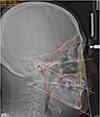|
|
| Full-mouth rehabilitation of skeletal anterior open bite with severely decayed dentition: A case report
|
Seong-A Kim ,
Kwantae Noh ,
Kwantae Noh ,
Ahran Pae ,
Ahran Pae and Yi-Hyung Woo
and Yi-Hyung Woo
|
Department of Prosthodontics, School of Dentistry, Kyung Hee University, Seoul, Republic of Korea.
|
 Corresponding Author: Yi-Hyung Woo. Department of Prosthodontics, School of Dentistry, Kyung Hee University, 26, Kyungheedae-ro, Dongdaemun-gu, Seoul 02447, Republic of Korea. +82 (0)2 958 9340, Email: yhwoo@khu.ac.kr Corresponding Author: Yi-Hyung Woo. Department of Prosthodontics, School of Dentistry, Kyung Hee University, 26, Kyungheedae-ro, Dongdaemun-gu, Seoul 02447, Republic of Korea. +82 (0)2 958 9340, Email: yhwoo@khu.ac.kr
|
|
Received July 25, 2016; Revised August 25, 2016; Accepted September 12, 2016.
|
|
This is an Open Access article distributed under the terms of the Creative Commons Attribution Non-Commercial License (http://creativecommons.org/licenses/by-nc/3.0/) which permits unrestricted non-commercial use, distribution, and reproduction in any medium, provided the original work is properly cited.
|
|
|
Abstract
|
The open bite malocclusion is a common clinical entity and has multifactorial causes. Development of effective treatment plan and management is dependent on proper diagnosis. The skeletal open bite patient requires a coordinated orthodontic and orthognathic surgical approach to achieve stable occlusion, acceptable esthetics, and improved function. But in case of open bite with severely decayed dentition, restoration in the entire dentition is necessary. Using the facial analysis and diagnostic wax-up, the most effective treatment was prosthetic rehabilitation. The provisional restorations were fabricated to satisfy esthetic and functional requirements, which result in the uniformly distributed occlusal force, anterior and canine guidance. The inter-arch relationship, labio-dental harmony, and the soft tissue aspect, which is important to estimate the longevity were evaluated. Definitive restorations of monolithic zirconia were made by replicating provisional restorations by using the latest CAD/CAM technology. They were delivered to the patient and clinical follow-up observation was satisfactory.
|




 ePub
ePub Citation
Citation Print
Print
















